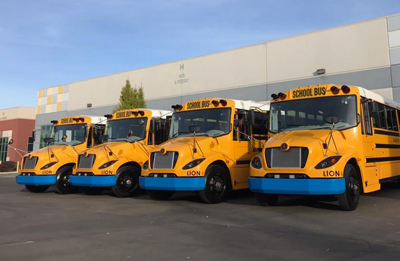How are efforts to electrify school buses coming along so that our young people aren’t exposed to noxious exhaust fumes? — Will Durk, Waterbury, CT‘
Over 21 million children ride the school bus each day, making student transportation the largest U.S. mass transit system. Some 90 percent of these buses run on diesel, a known carcinogen with serious public health and ecological impacts. Pollution from diesel fumes has been directly linked to increased asthma and reduced cognitive development in children, excessively affecting low-income communities. Says Jessica Keithan, co-founder and director of the Texas Electric School Bus Project, “We’re poisoning our kids on the way to school.”

Thankfully, advocacy groups across the U.S. have been making great strides in addressing electrification of school buses, from involving underserved communities and educating policymakers to working with school districts on this issue–and prompting action.
The U.S. government has made significant investments to help school districts transition to electric. Through its Infrastructure Investment and Jobs Act signed into law in 2021, the Biden-Harris administration created the Clean School Bus Program, a $5 billion Environmental Protection Agency- (EPA) funded grant program to replace diesel-run buses with zero-tailpipe-emission, electric vehicles. To date, this program has successfully integrated more than 12,000 electric buses into school districts nationwide.
States Are Supporting Electrification, Too
In addition to this noteworthy investment, states across the nation have adopted their own laws to replace diesel-fueled school bus fleets with electric. California, New York and Illinois lead the “charge.”

There are inherent roadblocks in mass electrification of school buses. More than 800 school districts have at least one electric school bus in service, but many simply don’t have the budget available to commit to more. According to the U.S. House of Representatives’ Majority Staff Report Examining the EPA’s Clean School Bus Program, the long-term fuel maintenance savings are barely worth the up-front investment in electric school buses, which cost an estimated $350,000 per bus, on top investment needed in a charging infrastructure. The EPA program tremendously assists districts, but it’s only due to run through 2026 or once the $5 billion is depleted. Also, the politics behind going electric could reduce funding opportunities depending on who is in the White House next year. “If Trump is elected, the fact is that we would lose this funding,” says Leah Stokes, an associate professor at the University of California, Santa Barbara.”
With or without funding, school bus electrification needs to be made more affordable. Shifting from diesel to electric will only happen when leaders at every level understand and rally behind it.
[Ed. note: I’ll be honest, besides the positive news on the electrification front in this story, what convinced me to publish it was the photo. That’s WA Governor Inslee at my alma mater, Franklin Pierce High School! Go Cardinals.]
Contacts:
Electric School Bus Initiative
EarthTalk® is produced by Roddy Scheer & Doug Moss for the 501(c)3 nonprofit EarthTalk, which welcomes donations. See more at E Magazine. Send questions to: question@earthtalk.org.

9 thoughts on “How Much Progress Have We Made to Transition to Electric School Buses?”